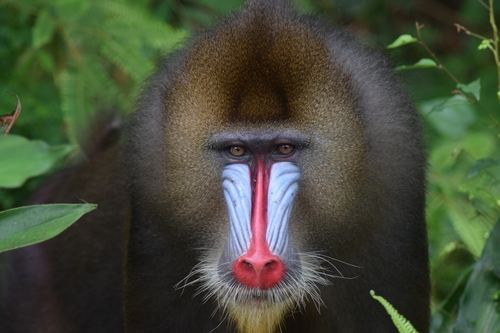
Mandrill
The mandrill (Mandrillus sphinx) boasts vibrant facial hues and a robust build, thriving in Central African rainforests. Known for their social hordes, these colorful primates are essential seed dispersers, blending strength and social complexity in one of nature's vivid spectacles.
11.5 - 30.0 kg
Weight
Brown, Grey, Black, White, Tan
Color
25 mph
Top Speed
Vulnerable
Conservation Status
Decreasing
Population Trend
Characteristics
Mandrillus sphinx, known as the mandrill, inhabits the rainforests of Central Africa. It is famous for its striking facial coloration and large size, being one of the largest monkeys. Mandrills are social, living in groups called hordes. They have a diet of fruits, seeds, and insects and play a key role in seed dispersion.
Distribution Range of the Mandrill
Mandrillus sphinx, commonly known as the mandrill, is native to the rainforests of central Africa. Its geographical distribution primarily includes countries such as Cameroon, Gabon, Equatorial Guinea, and the Republic of the Congo. The species is often found in the dense tropical rainforests and occasionally in gallery forests and wooded savannas within these regions.
Mandrill's Habitat
Environmental Conditions
Mandrills inhabit dense, humid, and lush rainforest environments that offer abundant foliage and tree cover. These conditions provide the necessary resources for shelter, food, and protection. The climate within these regions is typically warm with high humidity, experiencing significant annual rainfall which supports the dense vegetation.
Ecological Niche
Mandrills occupy an ecological niche as omnivorous foragers, primarily consuming fruits, seeds, and other plant materials, but also insects, small vertebrates, and eggs. They play a crucial role in seed dispersal due to their fruit-heavy diet. Their social structure is complex, usually forming large groups called troops, which are essential for protection against predators and foraging efficiency. Mandrills have adapted to a life both on the ground and in the trees, showcasing their versatility in navigating their forested habitat.
Copyright @ Nature Style Limited. All Rights Reserved.
 English
English